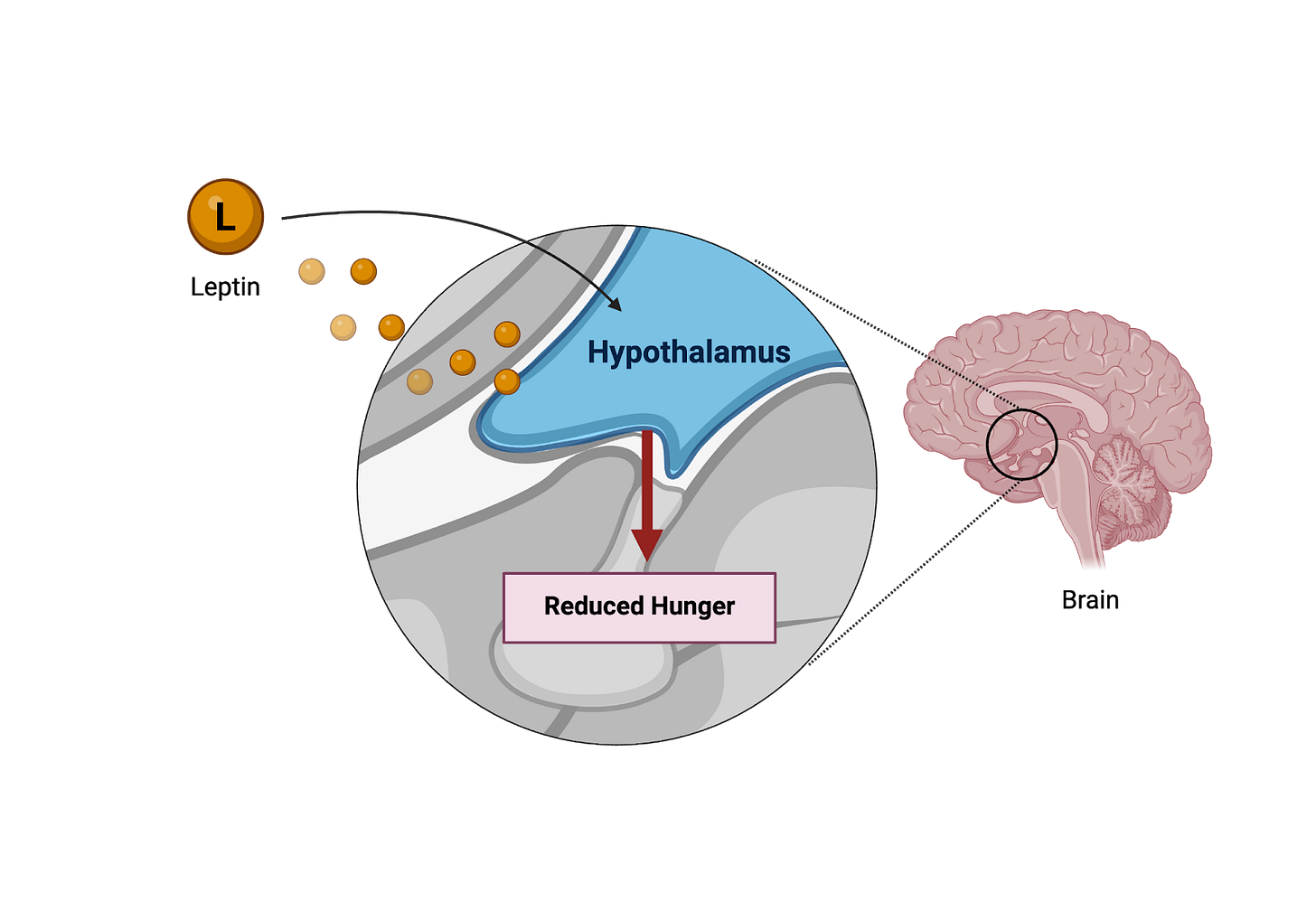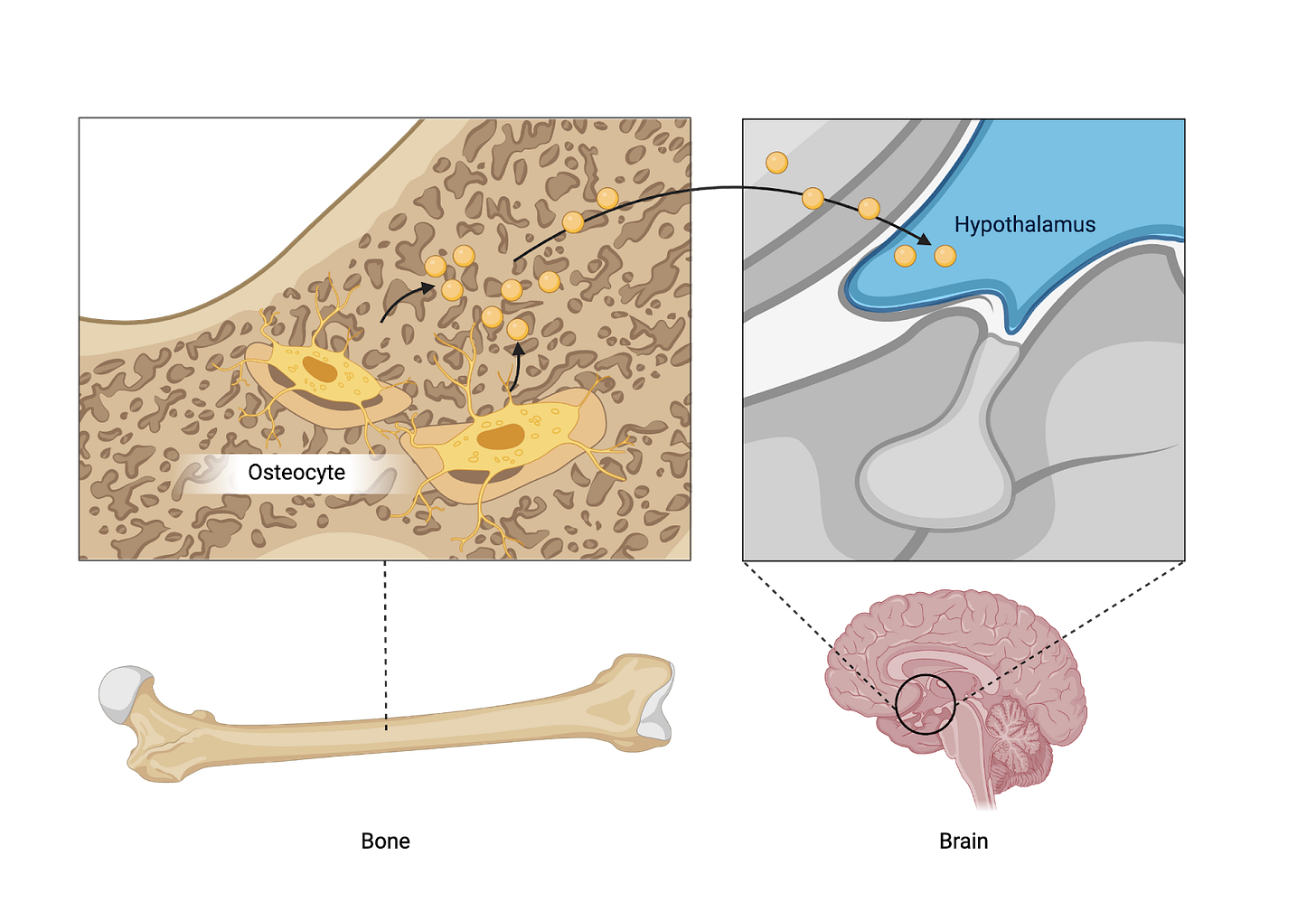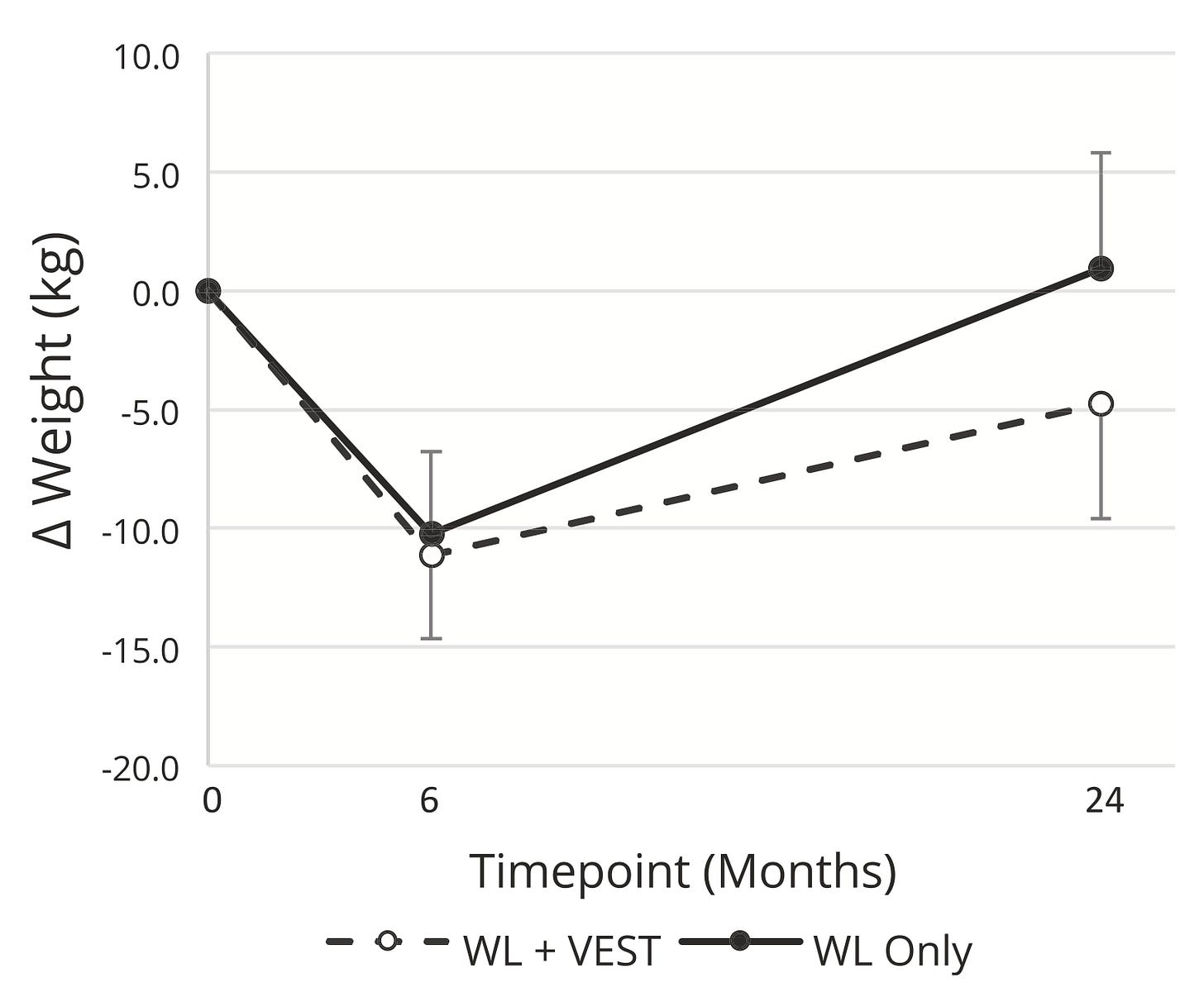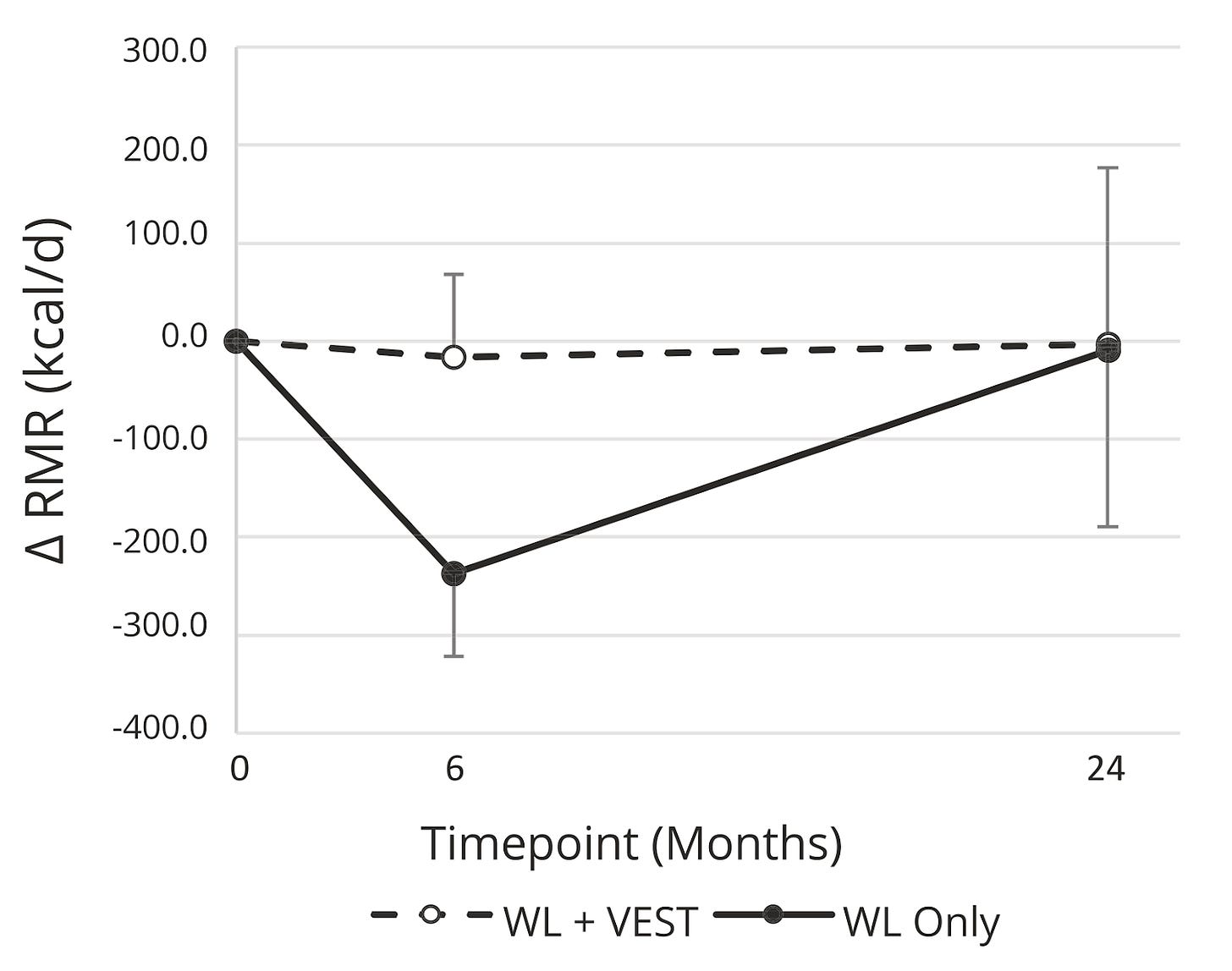What Weighted Vests do to your Body: New Evidence
Main Points
This pilot study suggests that wearing a weighted vest during a calorie-restricted diet may lead to long-lasting benefits: improved maintenance of weight loss and preservation of resting metabolic rate even after vest use ends. These effects may be driven by skeletal sensing mechanisms like the Gravitostat, which influences metabolism and appetite via bone-derived signals. Despite its small size, the study opens the door to using weighted vests as a novel, low-effort strategy to counter the body’s natural resistance to sustained weight loss - of course, more data is needed to confirm. The full analysis includes a Step-by-Step protocol for how to use a weighted vest effectively based on multiple studies - found here.
A while back, I interviewed Robin (Science of Self Care) about her experience using a weighted vest, where we dove deep into the science of how these vests might influence health and body composition. But rather than rehashing that discussion, I’d like to share new and compelling evidence from a pilot study that explored two key physiological changes that occur with weighted vest use—effects that persisted long after the vest came off.
In this small study [478], researchers recruited 18 overweight adults—many of whom also had osteoarthritis—and split them into two groups: one followed a calorie-restricted diet, while the other followed the same diet but also wore a weighted vest. Both groups maintained their protocols for 6 months, but the researchers continued tracking them for a full 2 years. Importantly, vest use ended after the initial 6-month period.
What makes this study so interesting isn’t just the short-term changes, but the long-term ones.
The Weight Regain Problem
The challenge with weight loss isn’t just losing the weight—it’s keeping it off. Most people regain it within a few years. Two main biological forces are at play here:
Hormonal adaptations, particularly the reduction in leptin—a hormone secreted by fat cells that suppresses hunger. As fat mass drops, leptin secretion falls, hunger increases, and the body pushes back against fat loss.
The Gravitostat Hypothesis—a lesser-known but emerging concept. This proposes that our skeleton senses body weight and adjusts food intake and metabolism accordingly, via bone-activated hormonal signals that act independently of fat-derived leptin.
How Bone Cells Might Influence Hunger
The Gravitostat mechanism centers on osteocytes, the sensory cells buried in our bones. These cells detect pressure—such as that added by a weighted vest—and, in response, release signaling molecules that act on the brain’s hypothalamus to modulate appetite and energy expenditure. This skeletal feedback system might explain why the weighted vest group fared better over time.
The Weight Loss & Regain Data
The study illustrates weight changes: initially, both groups lost similar amounts of weight during the 6-month diet phase. However, by the 2-year mark, the calorie-only group had regained virtually all the weight. In contrast, the Vesties (as I like to call them) maintained some of their weight loss, despite stopping vest use 18 months earlier. Something changed—something stuck.
Resting Metabolic Rate—The Surprise Discovery
But perhaps the most fascinating finding is the metabolic data in Figure 1B. Researchers measured resting metabolic rate (RMR)—the energy your body burns at rest. After 6 months, the diet-only group’s RMR dropped by over 200 calories, while the vest group maintained theirs. More strikingly, even after 2 years, the Vesties still showed preserved RMR.
This is notable because RMR comprises the majority of your daily caloric burn. It typically declines with weight loss and aging. That these participants maintained their RMR without ongoing vest use raises the possibility of a persistent physiological adaptation—likely not explained by muscle mass alone. Instead, it may relate to the Gravitostat mechanism or some other yet-to-be-defined effect of the skeletal load.
What’s in the Full Analysis?
A Step-by-Step protocol for how to use a weighted vest effectively based on multiple studies.
Join the Insiders for access to the protocol and so much more:
What This Means for You
If these findings hold up in larger studies, weighted vest use could be a powerful, low-effort tool for not only aiding weight loss but preventing weight regain, while protecting the body's metabolic engine.
Main Points
This pilot study suggests that wearing a weighted vest during a calorie-restricted diet may lead to long-lasting benefits: improved maintenance of weight loss and preservation of resting metabolic rate even after vest use ends. These effects may be driven by skeletal sensing mechanisms like the Gravitostat, which influences metabolism and appetite via bone-derived signals. Despite its small size, the study opens the door to using weighted vests as a novel, low-effort strategy to counter the body’s natural resistance to sustained weight loss - of course, more data is needed to confirm. The full analysis includes a Step-by-Step protocol for how to use a weighted vest effectively based on multiple studies - found here.
Nicolas Verhoeven, PhD / Physionic
References
[Study 478] DeLong C, Nicklas BJ, Beavers DP, Fanning J, Beavers KM. Does weighted vest use during weight loss influence long-term weight loss maintenance? A pilot study in older adults living with obesity and osteoarthritis. Int J Obes (Lond). 2025; https://doi.org/10.1038/s41366-025-01795-5.
Funding/Conflicts: Mixed Funding [Industry: Jason Pharmaceuticals, Inc / Public: Arthritis and Musculoskeletal Disease Research Center; Translational Science Center; Center for Integrated Medicine at Wake Forest School of Medicine] // No direct Conflicts of Interest





